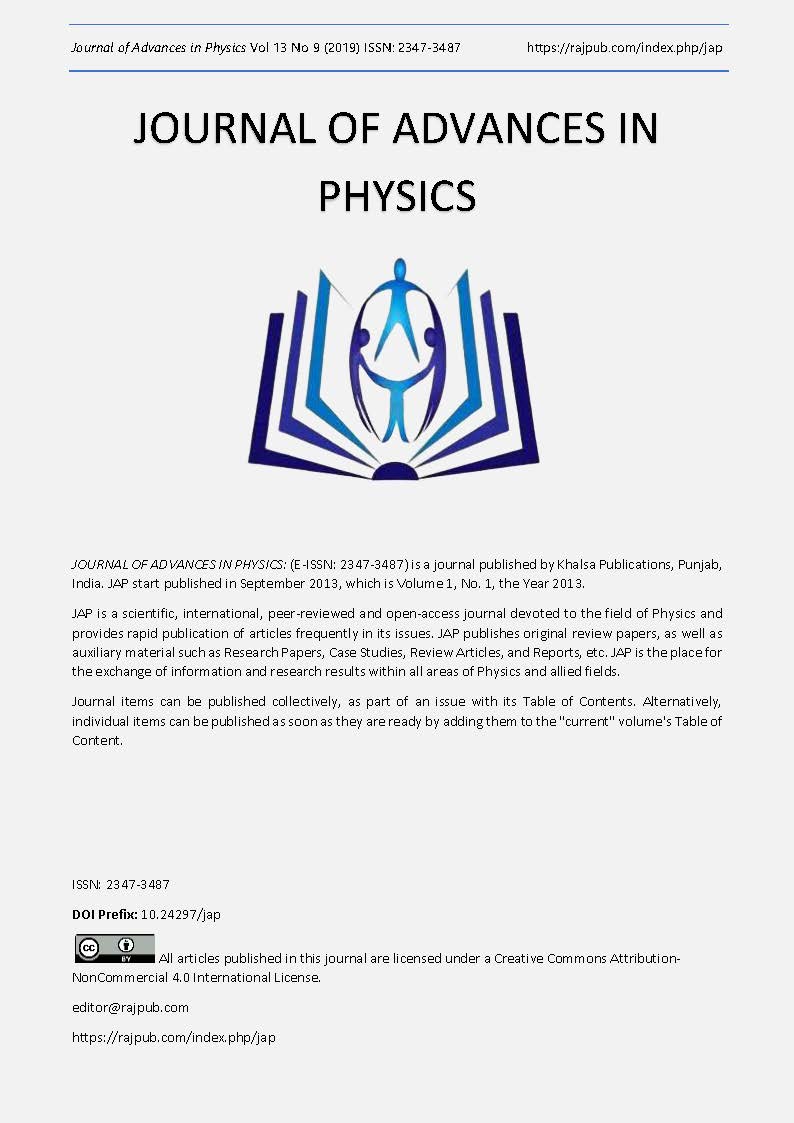THE PHYSICAL MODEL FOR AN ORGANIZATION: SIMILAR ASPECTS BETWEEN "ATOM'' AND "ORGANIZATION''
DOI:
https://doi.org/10.24297/jap.v13i9.6334Keywords:
Physical system; Social system; Atom; Organization.Abstract
In this paper we claim that there exist some similar aspects between "atom'', as a typical physical system, and its counterpart "organization'' as a social system. These similar aspects have been shown by comparison between employees with electrons, board of directors with nucleus, dismissal with photoelectric effect, and organizational restructuring with nuclear reaction.
Downloads
Download data is not yet available.
References
[1] Ball, P. The physical modeling of human social systems. Complexus 2014; 1(4):190--206.
[2] Helbing, D., Keltsch, J., Molnar, P., Modelling the evolution of human trail systems. Nature, 1997;388:47--50.
[3] Jiang, R., Wu, Q-S., Zhu, Z-J., A new continuum model for traffic flow and numerical tests. Transportation Research Part B: Methodological, 2002; 36(5):405--419.
[4] Ross, P., Traffic dynamics. Transportation Research Part B: Methodological, 1988;22(6):421--435.
[5] Phase transitions in models of human cooperation. Physics Letters A, 2016; 380(36):2803--2808.
[6] Helbing, D. Traffic and related self-driven many-particle systems. Rev. Mod. Phys. 2001; 73(4):1067--1141.
[7] Helbing, D., Molnar, p., Farkas, I-J. Bolay, K., Self-organizing pedestrian movement. Environment and Planning B: Planning and Design, 2001; 28:361--383.
[8] Doyle, E., The economic system, Wiley; 2005.
[9] Bard, A-J., Integrated chemical systems: A chemical approach to nanotechnology, Jon Wiley & Sons, Inc.; 1994.
[10] Parsons, T., The social system. Glencoe,III. : Free Press;1951.
[2] Helbing, D., Keltsch, J., Molnar, P., Modelling the evolution of human trail systems. Nature, 1997;388:47--50.
[3] Jiang, R., Wu, Q-S., Zhu, Z-J., A new continuum model for traffic flow and numerical tests. Transportation Research Part B: Methodological, 2002; 36(5):405--419.
[4] Ross, P., Traffic dynamics. Transportation Research Part B: Methodological, 1988;22(6):421--435.
[5] Phase transitions in models of human cooperation. Physics Letters A, 2016; 380(36):2803--2808.
[6] Helbing, D. Traffic and related self-driven many-particle systems. Rev. Mod. Phys. 2001; 73(4):1067--1141.
[7] Helbing, D., Molnar, p., Farkas, I-J. Bolay, K., Self-organizing pedestrian movement. Environment and Planning B: Planning and Design, 2001; 28:361--383.
[8] Doyle, E., The economic system, Wiley; 2005.
[9] Bard, A-J., Integrated chemical systems: A chemical approach to nanotechnology, Jon Wiley & Sons, Inc.; 1994.
[10] Parsons, T., The social system. Glencoe,III. : Free Press;1951.
Downloads
Published
2017-10-25
How to Cite
Pishkoo, A. (2017). THE PHYSICAL MODEL FOR AN ORGANIZATION: SIMILAR ASPECTS BETWEEN "ATOM’’ AND "ORGANIZATION’’. JOURNAL OF ADVANCES IN PHYSICS, 13(9), 5100–5104. https://doi.org/10.24297/jap.v13i9.6334
Issue
Section
Articles
License
 All articles published in Journal of Advances in Linguistics are licensed under a Creative Commons Attribution 4.0 International License.
All articles published in Journal of Advances in Linguistics are licensed under a Creative Commons Attribution 4.0 International License.




